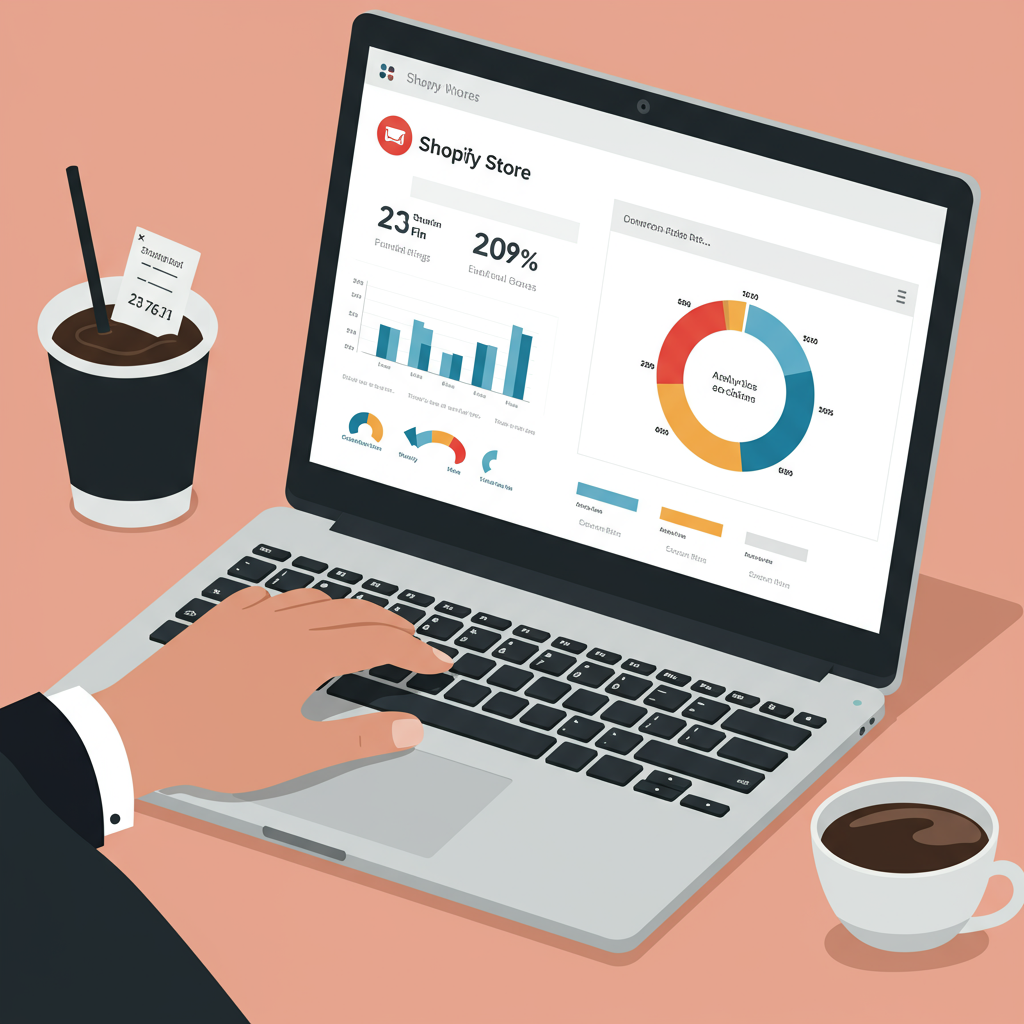Unlocking Higher Sales and Maximizing Your E-commerce Potential
As a Shopify merchant, you’re constantly striving to grow your business. You invest in marketing, drive traffic to your store, and curate amazing products. But what happens when visitors arrive? Are they converting into paying customers at the rate you’d like?
This is where Conversion Rate Optimization, or CRO, becomes your best friend. It’s not just about getting more traffic; it’s about making the most of the traffic you already have.
Simply put, CRO is the systematic process of increasing the percentage of website visitors who complete a desired goal – in our case, making a purchase on your Shopify store.
It involves understanding how users navigate your site, what actions they take, and what prevents them from converting. My goal today is to walk you through the essentials of CRO specifically for your Shopify store.
First, let’s talk about understanding your current performance. You can’t optimize what you don’t measure. Dive deep into your Shopify analytics and Google Analytics. Look at your conversion rate, bounce rate, time on site, and popular pages.
Identify where visitors are dropping off. Is it on product pages, during the cart process, or at checkout? Pinpointing these bottlenecks is the crucial first step in any CRO strategy.
Next, consider user experience (UX). A seamless and intuitive shopping experience is paramount. Is your navigation clear? Can customers easily find what they’re looking for? A cluttered or confusing layout can quickly deter potential buyers.
I always recommend simplifying your menu structure and ensuring search functionality is prominent and effective. Think about how you, as a shopper, would want to navigate a store.
Website speed is another non-negotiable. In today’s fast-paced digital world, patience is a rare commodity. A slow-loading Shopify store will lead to high bounce rates and lost sales.
Utilize tools like Google PageSpeed Insights to identify areas for improvement. Optimize images, minimize app usage, and consider a lightweight theme. Every millisecond counts.
Now, let’s focus on your product pages. These are often the make-or-break point. High-quality, compelling product images are essential. Show your products from multiple angles, in use, and with lifestyle shots.
Your product descriptions should be more than just a list of features. They need to tell a story, highlight benefits, and address potential customer pain points. Use clear, concise language and bullet points for readability.
Social proof is incredibly powerful. Display customer reviews prominently on your product pages. People trust the opinions of their peers more than anything you can say about your own products.
Consider adding user-generated content, like customer photos or videos, if applicable. This builds authenticity and trust, which are vital for conversion.
Moving to the cart and checkout process, this is where many sales are lost. Keep it as simple and streamlined as possible. Minimize the number of steps required to complete a purchase.
Offer guest checkout options – forcing customers to create an account can be a significant barrier. Clearly display shipping costs and estimated delivery times early in the process to avoid surprises.
Ensure your checkout is mobile-responsive. A significant portion of your traffic likely comes from mobile devices, so a clunky mobile checkout will decimate your conversion rate.
Trust and credibility are foundational. Display trust badges, secure payment icons, and clear return policies. Make your contact information easily accessible.
A strong ‘About Us’ page and transparent policies build confidence. Customers want to feel secure when making a purchase from your store.
Your Call to Actions (CTAs) need to be clear, compelling, and strategically placed. Instead of just ‘Buy Now,’ consider more benefit-oriented language like ‘Add to Cart & Get Yours Today’ or ‘Shop the Collection.’
Use contrasting colors for your CTA buttons to make them stand out. Test different wording and button placements to see what resonates best with your audience.
A/B testing is your secret weapon in CRO. Don’t guess; test! Change one element at a time – a headline, a button color, an image – and see which version performs better.
Tools like Google Optimize (while being sunset, alternatives exist) or dedicated Shopify apps can help you run these tests effectively. It’s a continuous process of experimentation and learning.
Personalization can significantly boost conversions. Use customer data to recommend relevant products, offer personalized discounts, or tailor email campaigns. Shopify apps can help you implement this.
Finally, don’t forget about post-purchase optimization. A positive post-purchase experience can lead to repeat business and valuable word-of-mouth referrals. Clear communication about shipping and delivery is key.
I believe that by systematically addressing these areas, you’ll see a tangible improvement in your Shopify store’s conversion rate. It’s an ongoing journey, not a one-time fix.
What do you think about this article? Are there any specific CRO challenges you’re facing with your Shopify store?
Remember, every small improvement adds up. Start with the biggest pain points you identified in your analytics and work your way through. Consistent effort in CRO will yield significant returns for your e-commerce business.
I encourage you to pick one area from this guide and start optimizing today. Even small changes can lead to big results over time. Happy optimizing!






